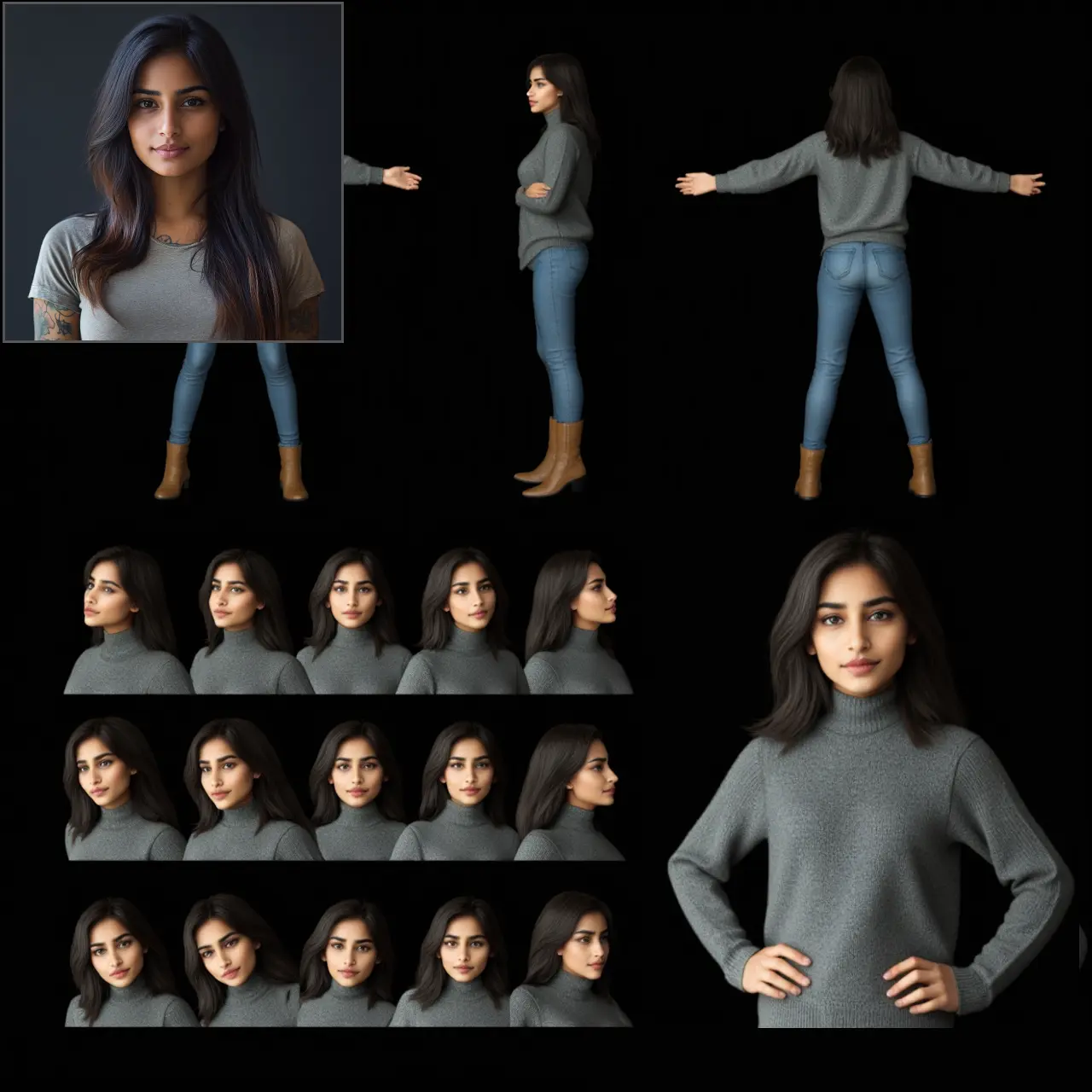ComfyUI Node: Get mean and standard deviation of array v4.7.3
tri3d-get_mean_and_standard_deviation
CategoryTRI3D
TRI3D-LC (Account age: 770days) Extension
tri3d-comfyui-nodes Latest Updated
2025-05-21 Github Stars
0.03K
How to Install tri3d-comfyui-nodes
Install this extension via the ComfyUI Manager by searching for tri3d-comfyui-nodes- 1. Click the Manager button in the main menu
- 2. Select Custom Nodes Manager button
- 3. Enter tri3d-comfyui-nodes in the search bar
Visit ComfyUI Online for ready-to-use ComfyUI environment
- Free trial available
- 16GB VRAM to 80GB VRAM GPU machines
- 400+ preloaded models/nodes
- Freedom to upload custom models/nodes
- 200+ ready-to-run workflows
- 100% private workspace with up to 200GB storage
- Dedicated Support
Get mean and standard deviation of array v4.7.3 Description
Calculate mean and standard deviation for image processing tasks, aiding AI artists in adjusting pixel value distributions efficiently.
Get mean and standard deviation of array v4.7.3:
The tri3d-get_mean_and_standard_deviation node is designed to calculate the mean and standard deviation of a given array, specifically within the context of image processing tasks. This node is particularly useful for AI artists who need to analyze and adjust the statistical properties of image data, such as brightness and contrast, in a precise manner. By computing these statistical measures, the node allows you to understand the distribution of pixel values in an image or a masked region of an image, which can be crucial for tasks like image normalization, enhancement, or background swapping. The node leverages the get_mu_sigma function to perform these calculations, ensuring accurate and efficient processing. This functionality is essential for maintaining consistency across different images or image regions, especially when working with complex compositions or when integrating multiple images into a single artwork.
Get mean and standard deviation of array v4.7.3 Input Parameters:
input_array
The input_array parameter is a required input that represents the array of pixel values from which the mean and standard deviation will be calculated. This array is typically derived from an image and is expected to be in a format compatible with the node's processing capabilities, such as a PyTorch tensor. The input_array should be provided in a masked format, which means it should be pre-processed to focus on the specific region of interest within the image. This parameter is crucial as it directly influences the statistical calculations performed by the node. There are no explicit minimum, maximum, or default values for this parameter, but it should be a valid image array that the node can process.
input_mask
The input_mask parameter is another required input that defines the region of interest within the input_array for which the mean and standard deviation will be calculated. This mask is used to isolate specific areas of the image, allowing for targeted analysis and processing. The input_mask should be in the same format and dimensions as the input_array, ensuring that the node can accurately apply the mask to the array. This parameter is essential for focusing the statistical analysis on relevant parts of the image, such as a subject or a specific background area. Like the input_array, there are no explicit minimum, maximum, or default values, but it should be a valid mask that corresponds to the input_array.
Get mean and standard deviation of array v4.7.3 Output Parameters:
Mean
The Mean output parameter represents the average value of the pixel intensities within the specified region of the input_array, as defined by the input_mask. This value is crucial for understanding the overall brightness or color intensity of the masked area, providing insights into the image's exposure and balance. The mean is a floating-point number that reflects the central tendency of the pixel values, and it can be used to adjust the image's brightness or to compare different image regions.
Standard deviation
The Standard deviation output parameter quantifies the amount of variation or dispersion of the pixel values within the masked region of the input_array. This value is important for assessing the contrast and texture of the image area, indicating how much the pixel values deviate from the mean. A higher standard deviation suggests more variation in pixel intensities, which can imply a more textured or detailed region, while a lower standard deviation indicates a more uniform area. This floating-point number is essential for tasks that require precise control over image contrast and detail.
Get mean and standard deviation of array v4.7.3 Usage Tips:
- Ensure that the
input_arrayandinput_maskare correctly aligned and of the same dimensions to avoid processing errors and to ensure accurate calculations. - Use this node to analyze specific regions of an image by applying a mask, which can help in tasks like background removal or subject isolation, where understanding the statistical properties of the region is crucial.
Get mean and standard deviation of array v4.7.3 Common Errors and Solutions:
"batch size of different layers do not match"
- Explanation: This error occurs when the batch size of the
input_arraydoes not match the batch size of theinput_mask, leading to a mismatch in processing. - Solution: Ensure that both the
input_arrayandinput_maskhave the same batch size and dimensions before passing them to the node. Double-check the preprocessing steps to confirm that both inputs are correctly aligned.
"Invalid input format"
- Explanation: This error might occur if the
input_arrayorinput_maskis not in the expected format, such as a PyTorch tensor. - Solution: Verify that both inputs are properly formatted as PyTorch tensors and that they are compatible with the node's processing requirements. Convert any incompatible formats before using the node.
Get mean and standard deviation of array v4.7.3 Related Nodes
- Description
- tri3d-get_mean_and_standard_deviation:
- tri3d-get_mean_and_standard_deviation Input Parameters:
- tri3d-get_mean_and_standard_deviation Output Parameters:
- tri3d-get_mean_and_standard_deviation Usage Tips:
- tri3d-get_mean_and_standard_deviation Common Errors and Solutions:
- Related Nodes
RunComfy is the premier ComfyUI platform, offering ComfyUI online environment and services, along with ComfyUI workflows featuring stunning visuals. RunComfy also provides AI Playground, enabling artists to harness the latest AI tools to create incredible art.


